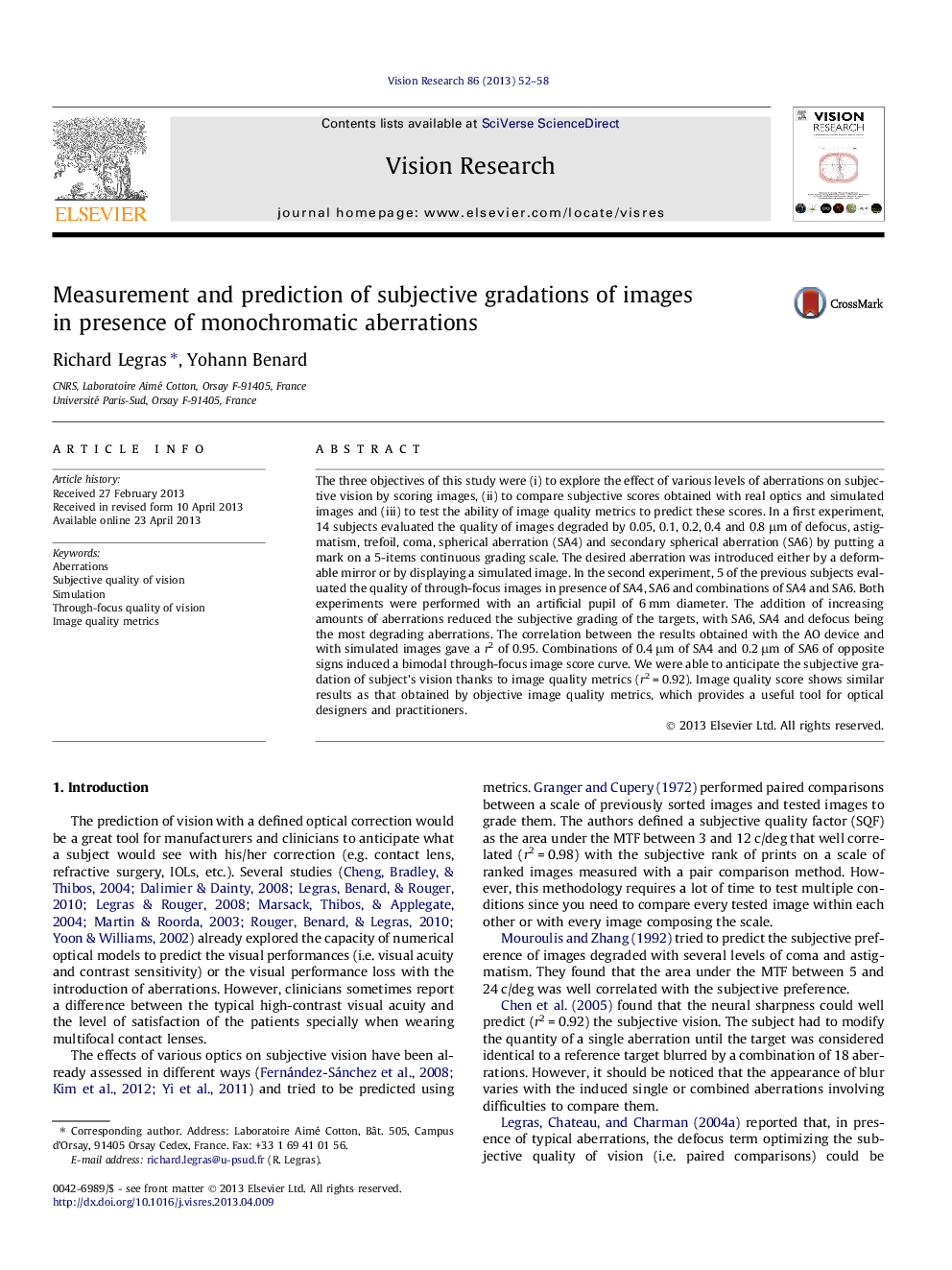| Article ID | Journal | Published Year | Pages | File Type |
|---|---|---|---|---|
| 4033799 | Vision Research | 2013 | 7 Pages |
•Gradation of images is a good alternative to evaluate the quality of vision.•Subjective scores obtained with real optics and simulated images are comparable.•Image quality metrics are able to predict image quality scores.•Combination of SA4 and SA6 of opposite signs induced a bimodal through-focus image score.
The three objectives of this study were (i) to explore the effect of various levels of aberrations on subjective vision by scoring images, (ii) to compare subjective scores obtained with real optics and simulated images and (iii) to test the ability of image quality metrics to predict these scores. In a first experiment, 14 subjects evaluated the quality of images degraded by 0.05, 0.1, 0.2, 0.4 and 0.8 μm of defocus, astigmatism, trefoil, coma, spherical aberration (SA4) and secondary spherical aberration (SA6) by putting a mark on a 5-items continuous grading scale. The desired aberration was introduced either by a deformable mirror or by displaying a simulated image. In the second experiment, 5 of the previous subjects evaluated the quality of through-focus images in presence of SA4, SA6 and combinations of SA4 and SA6. Both experiments were performed with an artificial pupil of 6 mm diameter. The addition of increasing amounts of aberrations reduced the subjective grading of the targets, with SA6, SA4 and defocus being the most degrading aberrations. The correlation between the results obtained with the AO device and with simulated images gave a r2 of 0.95. Combinations of 0.4 μm of SA4 and 0.2 μm of SA6 of opposite signs induced a bimodal through-focus image score curve. We were able to anticipate the subjective gradation of subject’s vision thanks to image quality metrics (r2 = 0.92). Image quality score shows similar results as that obtained by objective image quality metrics, which provides a useful tool for optical designers and practitioners.
